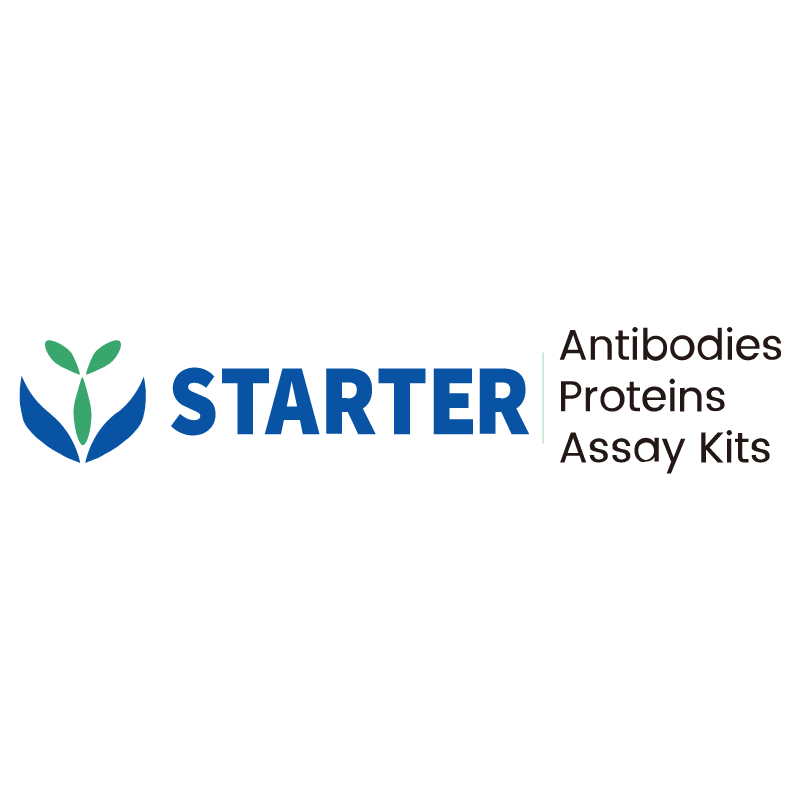WB result of SHMT2/SHMT Rabbit pAb
Primary antibody: SHMT2/SHMT Rabbit pAb at 1/1000 dilution
Lane 1: HepG2 whole cell lysate 20 µg
Lane 2: Jurkat whole cell lysate 20 µg
Lane 3: MDA-MB-231 whole cell lysate 20 µg
Lane 4: HeLa whole cell lysate 20 µg
Secondary antibody: Goat Anti-Rabbit IgG, (H+L), HRP conjugated at 1/10000 dilution Predicted MW: 56 kDa
Observed MW: 54 kDa
Product Details
Product Details
Product Specification
| Host | Rabbit |
| Antigen | SHMT2/SHMT |
| Synonyms | Serine hydroxymethyltransferase, mitochondrial; Glycine hydroxymethyltransferase; Serine methylase |
| Immunogen | Synthetic Peptide |
| Location | Mitochondrion |
| Accession | P34897 |
| Antibody Type | Polyclonal antibody |
| Isotype | IgG |
| Application | WB, IHC-P |
| Reactivity | Hu, Ms, Rt |
| Positive Sample | HepG2, Jurkat, MDA-MB-231, HeLa, mouse kidney, rat kidney |
| Purification | Immunogen Affinity |
| Concentration | 0.5 mg/ml |
| Conjugation | Unconjugated |
| Physical Appearance | Liquid |
| Storage Buffer | PBS, 40% Glycerol, 0.05% BSA, 0.03% Proclin 300 |
| Stability & Storage | 12 months from date of receipt / reconstitution, -20 °C as supplied |
Dilution
| application | dilution | species |
| WB | 1:1000 | Hu, Ms, Rt |
| IHC-P | 1:200 | Hu, Ms, Rt |
Background
SHMT2 is a pyridoxal phosphate-dependent enzyme that catalyzes the reversible reaction of serine and tetrahydrofolate to glycine and 5,10-methylene tetrahydrofolate. It is primarily responsible for glycine synthesis and is considered the main source of intracellular glycine. SHMT2 is mainly localized in mitochondria and is involved in the conversion of serine to glycine, which is crucial for one-carbon unit metabolism. This process supports the synthesis of thymidine and purines, promoting tumor growth. SHMT2 is highly expressed in various human tumors, including hepatocellular carcinoma, breast cancer, and non-small-cell lung cancer (NSCLC). Its elevated expression is associated with poor prognosis, and it may serve as a prognostic marker and a target for anticancer therapies. In cancer cells, SHMT2 supports tumor cell proliferation by maintaining redox balance and cell survival. It is involved in metabolic reprogramming, which is a significant hallmark of cancer. Genetic variations in the SHMT2 gene are significantly associated with changes in metabolic parameters such as circulating lipids, body mass indexes, and diabetic indicators, suggesting that SHMT2 may influence the development and outcome of metabolic syndrome in humans.
Picture
Picture
Western Blot
WB result of SHMT2/SHMT Rabbit pAb
Primary antibody: SHMT2/SHMT Rabbit pAb at 1/1000 dilution
Lane 1: mouse skeletal muscle lysate 20 µg
Lane 2: mouse kidney lysate 20 µg
Negative control: mouse skeletal muscle lysate
Secondary antibody: Goat Anti-Rabbit IgG, (H+L), HRP conjugated at 1/10000 dilution Predicted MW: 56 kDa
Observed MW: 54 kDa
WB result of SHMT2/SHMT Rabbit pAb
Primary antibody: SHMT2/SHMT Rabbit pAb at 1/1000 dilution
Lane 1: rat kidney lysate 20 µg
Secondary antibody: Goat Anti-Rabbit IgG, (H+L), HRP conjugated at 1/10000 dilution Predicted MW: 56 kDa
Observed MW: 54 kDa
Immunohistochemistry
IHC shows positive staining in paraffin-embedded human cervical squamous cell carcinoma. Anti-SHMT2/SHMT antibody was used at 1/200 dilution, followed by a HRP Polymer for Mouse & Rabbit IgG (ready to use). Counterstained with hematoxylin. Heat mediated antigen retrieval with Tris/EDTA buffer pH9.0 was performed before commencing with IHC staining protocol.
IHC shows positive staining in paraffin-embedded human lung squamous cell carcinoma. Anti-SHMT2/SHMT antibody was used at 1/200 dilution, followed by a HRP Polymer for Mouse & Rabbit IgG (ready to use). Counterstained with hematoxylin. Heat mediated antigen retrieval with Tris/EDTA buffer pH9.0 was performed before commencing with IHC staining protocol.
IHC shows positive staining in paraffin-embedded human colon cancer. Anti-SHMT2/SHMT antibody was used at 1/200 dilution, followed by a HRP Polymer for Mouse & Rabbit IgG (ready to use). Counterstained with hematoxylin. Heat mediated antigen retrieval with Tris/EDTA buffer pH9.0 was performed before commencing with IHC staining protocol.


